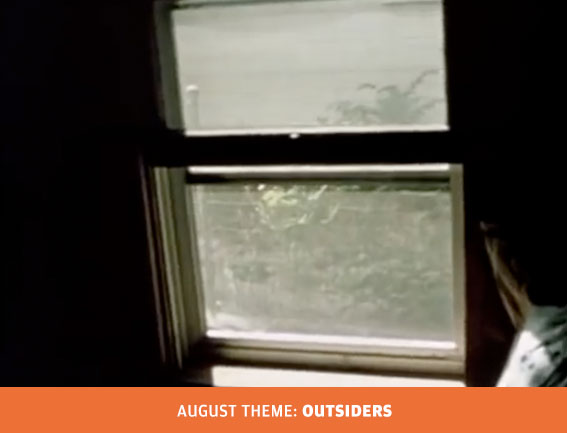
After Charlie Chaplin, who wrote, directed, edited, composed for and starred in his own pictures, Stan Brakhage was the only true auteur of the American cinema; a painter with light whose most innovative works were produced without the need of a camera. Brakhage’s oeuvre is best viewed chronologically, not only for the interest of seeing his signature evolve with each new canvas (8mm, 16mm, and even 70mm for Night Music), but also for the personal arc they trace – that of his first marriage, to Mary Jane Compton (known to us as Jane Brakhage).
The 1988 short I… Dreaming expresses the grief of Brakhage as this arc comes to an end; his separation from Jane was confirmed just a year before. The result is his most melodramatic and expressionist film, and one of only a handful he made with a soundtrack (a “collage” of Stephen Foster songs, interpreted by the composer Joel Haertling). Also for the first time, Brakhage takes himself as the sole subject of a film, and so the need to create fixed-angle shots results in an uncommonly still, deliberate work.
At several points in the film (Frames 1 and 4), Brakhage is seen only in magnified silhouette, and a fixed high-angle shot emphasises the motion of a diagonal structure hemming him in; when viewing the two shots together, this is revealed as an attic. I… Dreaming is an isolationist film, capturing not only the moods of depression, but its most fertile environments. These shots are classical too though, recalling the shots of Bigger Than Life (1956), a great film of Nicholas Ray’s, where James Mason’s shadow is projected and enlarged throughout the house.

Flashbacks appear by small, sharp bursts of light, as if forcibly entering Brakhage’s consciousness. Are these his grandchildren, playing without him? Or are they scenes from his childhood, now long past? Here, Brakhage borrows another technique of Ray’s, using colour to evoke an emotion that remains unexpressed, something subjective. In this shot, does a pale red light suggest uncertainty, not only for the future, but for the past?

A rare handheld shot finds Brakhage looking from his living room to the outside, where so many of his films – not least Dog Star Man (1962-64) – take place. If much of I… Dreaming is rooted in melodrama, this is the most vitally real image of the film, relating how the individual sequesters himself during depression, and projects an emotional barrier onto physical space. Can a window be a prison?

